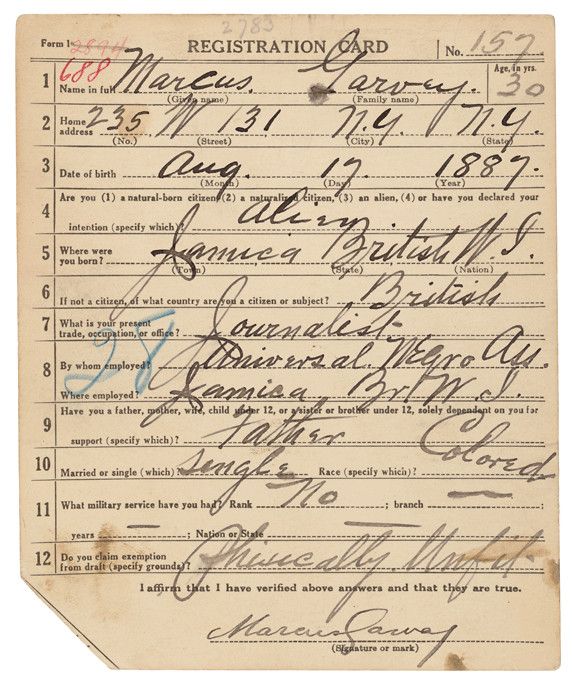World War I Draft Registration Card for Marcus Garvey
ca. 1917
Add to Favorites:
Add all page(s) of this document to activity:

The draft registration card of Marcus Garvey indicates that he worked as a journalist. Garvey's card notes that, born in Jamaica, he remained a citizen or subject of Britain at the time of registration. The Selective Service Act of May 18, 1917, authorized the President to temporarily increase the U.S. military. Under the authority of this act and later acts, the Army's Office of the Provost Marshall General supervised the registrations of approximately 24 million men for the World War I draft. Three registrations were held: the first, on June 5, 1917, for men aged 21 through 30; the second, on June 5, 1918, for men who had become 21 since June 5, 1917, supplemented by a registration held August 24, 1918, for men who had become 21 since June 2, 1918; and, the third, on September 12, 1918, for all men aged 18 through 45 who had not previously registered. The existence of a draft card does not necessarily denote military service. Registration is often confused with induction into the military; however, only a small percentage of those who registered were actually inducted into the military. The reverse is also true. All men who served in World War I did not necessarily register for the draft. Those who volunteered or those who were already in the military did not register.
This primary source comes from the Records of the Selective Service System (World War I).
National Archives Identifier: 641770
Full Citation: World War I Draft Registration Card for Marcus Garvey; ca. 1917; Records of the Selective Service System (World War I), Record Group 163. [Online Version, https://www.docsteach.org/documents/document/world-war-i-draft-registration-card-for-marcus-garvey, April 26, 2024]Rights: Public Domain, Free of Known Copyright Restrictions. Learn more on our privacy and legal page.



